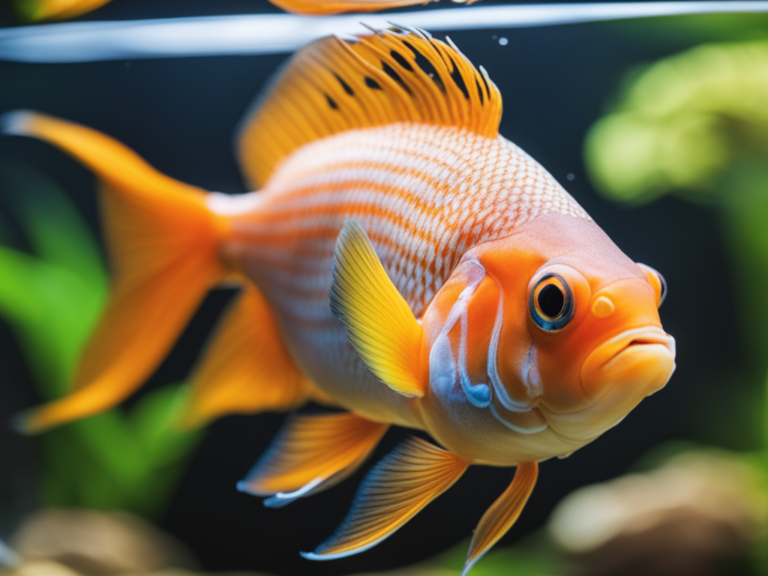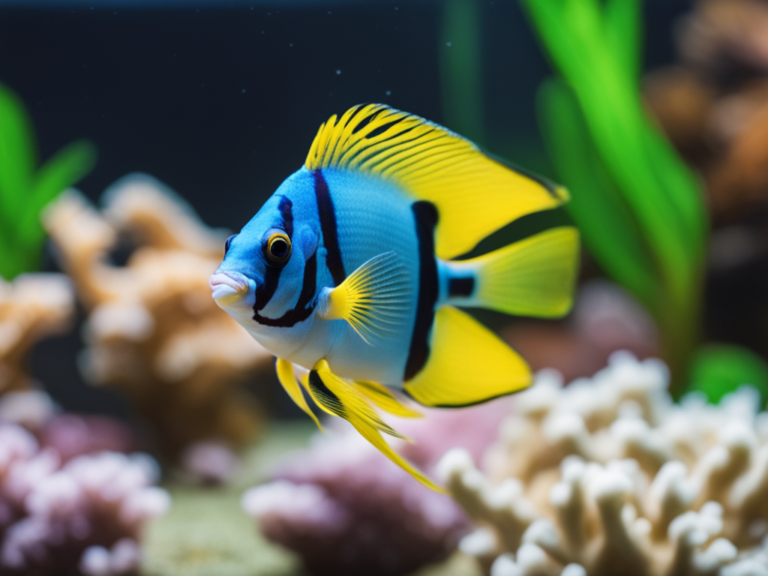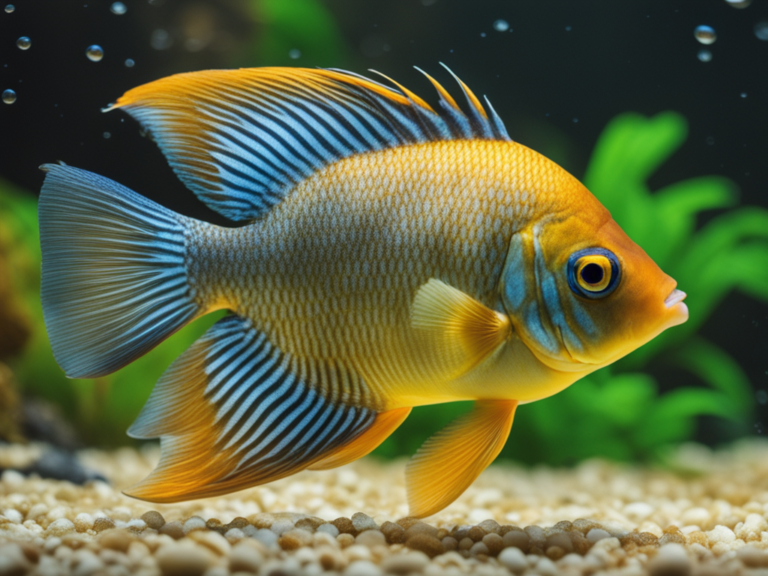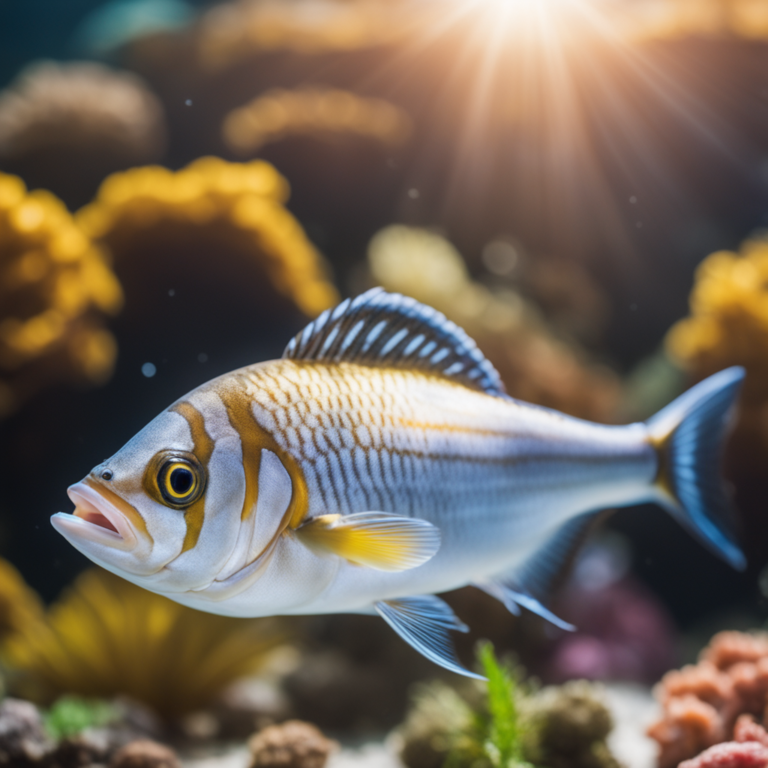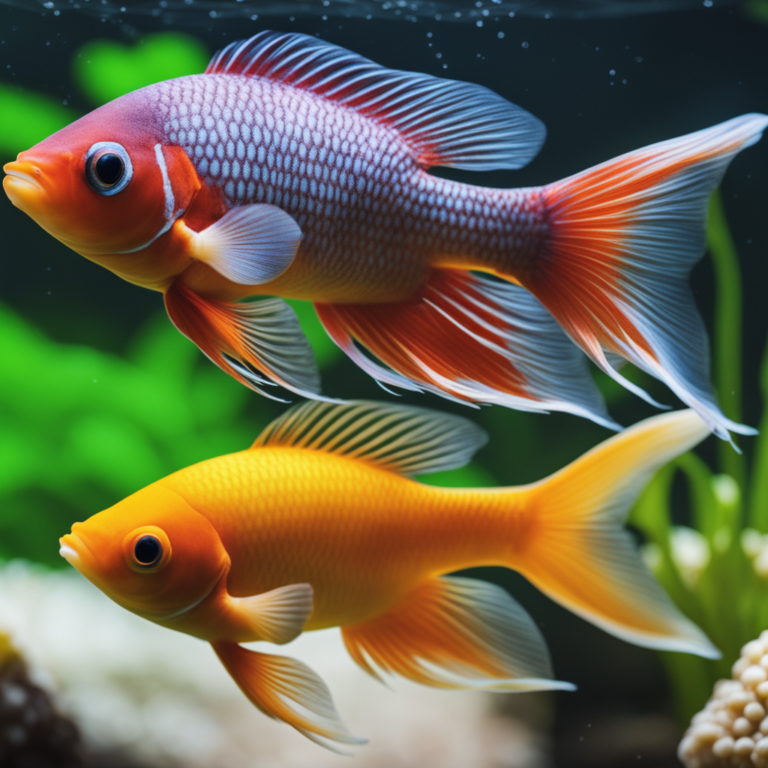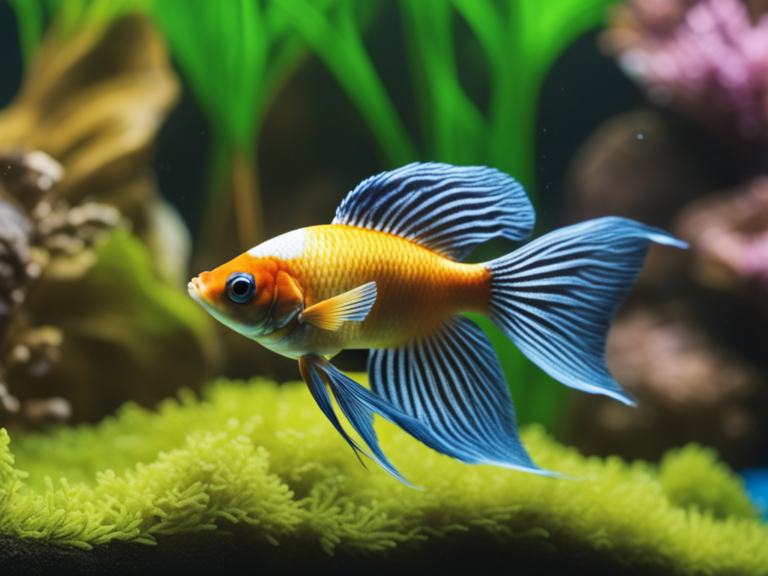Best Fish Breeds for Saltwater Aquariums
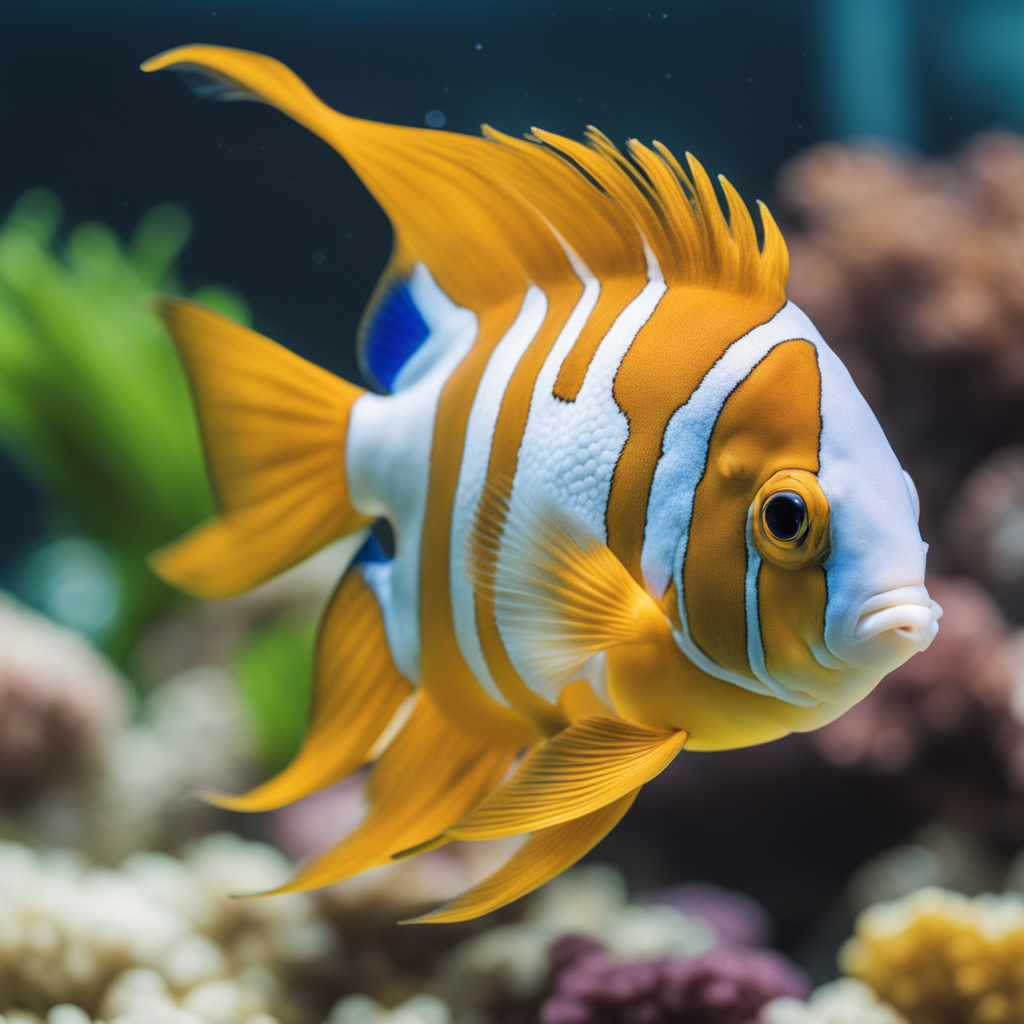
Fish Breeds for Saltwater Aquariums: Have you ever wondered if there are specific fish breeds that are ideal for your saltwater aquarium? Well, there are indeed certain fish breeds that thrive in saltwater environments. Whether you’re a beginner or an experienced aquarium enthusiast, selecting the right fish breeds can make all the difference in maintaining a healthy and vibrant ecosystem.
From the playful Clownfish to the majestic Angelfish, the colorful Tangs to the curious Gobies, there is a wide variety of options to choose from. Additionally, you can consider adding the graceful Wrasses, the elegant Butterflyfish, the hardy Damsels, the quirky Blennies, or even the bold Triggerfish. With careful research and consideration, you can create a captivating underwater world in your saltwater aquarium.
Clownfish
If you’re looking to add a colorful and lively fish to your saltwater aquarium, consider the clownfish. Clownfish, scientifically known as Amphiprioninae, are small, brightly colored fish that are native to the warm waters of the Pacific and Indian Oceans. They are highly sought after by aquarium enthusiasts due to their vibrant colors and interesting behaviors.
When it comes to breeding habits and tank requirements, clownfish are relatively easy to care for. They are known to be monogamous, forming pairs that remain together for life. The female is typically larger and more dominant than the male. To encourage breeding, it is recommended to provide them with a suitable environment that mimics their natural habitat. This includes a well-established saltwater aquarium with live rock, plenty of hiding places, and a temperature range of 75-82°F.
Clownfish are known for their striking color variations, each with unique characteristics. The most popular color variation is the orange clownfish, also known as the “Nemo” clownfish, with its bright orange body and white stripes. Another popular variation is the percula clownfish, which has vibrant orange bodies and three white stripes. The ocellaris clownfish, often referred to as the “false percula clownfish,” has a similar appearance to the percula clownfish but with thicker black outlines on the white stripes.
Angelfish
To successfully care for angelfish in your saltwater aquarium, it is important to understand their unique requirements and behaviors. Angelfish, scientifically known as Pterophyllum, are a popular choice for saltwater aquarium enthusiasts due to their striking appearance and interesting breeding behavior.
When it comes to angelfish breeding behavior, it is fascinating to observe their intricate courtship rituals. The male and female angelfish engage in a dance-like display, where they swim together, nudge each other, and make quick movements. This behavior is known as pair bonding and is essential for successful reproduction. Once a pair has bonded, they will lay their eggs on a flat surface, such as a broad leaf or a vertical surface. The male will then fertilize the eggs and both parents will guard the eggs until they hatch.
To create an ideal environment for angelfish in your saltwater aquarium, certain tank requirements should be met. Firstly, the tank should be spacious enough to accommodate angelfish, as they prefer swimming in open spaces. A minimum tank size of 20 gallons is recommended for a pair of angelfish, with an additional 10 gallons for each additional angelfish. The tank should also be well-filtered and maintained at a constant temperature of around 78-82°F. Angelfish thrive in slightly acidic water with a pH level between 6.5 and 7.
Tangs
When selecting fish breeds for your saltwater aquarium, consider adding tangs for their vibrant colors and active swimming behavior. Tangs, also known as surgeonfish, are a popular choice among aquarium enthusiasts due to their unique appearance and fascinating behavior. These fish belong to the family Acanthuridae and can be found in a variety of species, each with its own distinct characteristics. Here are some important factors to consider when keeping tangs in your aquarium:
- Tank size requirements: Tangs are active swimmers and require ample space to thrive. It is recommended to provide a tank with a minimum capacity of 75 gallons for a single tang, and an additional 25-50 gallons for each additional tang. This ensures that they have enough room to swim freely and exhibit their natural behavior.
- Compatibility with other fish species: Tangs are generally peaceful fish but can be territorial, especially towards other tangs of the same species. It is important to choose tank mates carefully to avoid aggression and ensure a harmonious community. Tangs are compatible with many other species, such as clownfish, gobies, and wrasses. However, caution should be exercised when introducing them to other aggressive or territorial fish.
- Diet and feeding: Tangs are herbivorous in nature and require a diet rich in algae and vegetable matter. Providing a varied diet that includes high-quality flakes, pellets, and fresh greens like seaweed or lettuce will help ensure their nutritional needs are met. It is also important to provide them with grazing opportunities, such as live rock or algae clips, to mimic their natural feeding behavior.
- Water quality and maintenance: Tangs are sensitive to poor water quality, so it is crucial to maintain stable water parameters. Regular water testing, adequate filtration, and appropriate water changes are essential for their well-being. Additionally, providing ample hiding places and a well-maintained aquarium will help reduce stress and promote a healthy environment for your tangs.
Gobies
Consider the adaptability of gobies when selecting fish breeds for your saltwater aquarium. Gobies are a diverse group of fish that belong to the family Gobiidae. They are known for their small size, vibrant colors, and interesting behaviors, making them a popular choice among aquarium enthusiasts. When it comes to breeding habits, gobies exhibit a wide range of strategies. Some species are monogamous, forming pairs and remaining faithful to their mate, while others are polygamous, mating with multiple partners. Certain gobies are even capable of changing their sex, transitioning from female to male if the dominant male in their group dies. This unique adaptation ensures the survival of the species.
In terms of tank compatibility, gobies are generally peaceful and can coexist with a variety of other fish species. However, it is important to consider the specific needs and behaviors of the gobies you choose. Some gobies are burrowers, creating intricate tunnel systems in the substrate, while others prefer to hide in rock crevices or coral formations. Providing ample hiding spots and suitable substrate is crucial to ensure their well-being. Additionally, certain gobies have specific dietary requirements, such as being primarily herbivorous or carnivorous. It is essential to research the dietary needs of the particular gobies you plan to keep to ensure they receive proper nutrition.
Wrasses
If you’re looking to add some vibrant and active fish to your saltwater aquarium, wrasses are a fantastic choice. These fascinating creatures offer a wide range of colors and patterns, making them a visually stunning addition to any tank. In addition to their striking appearance, wrasses also exhibit interesting behaviors and have specific compatibility requirements. Here are some key points to consider when keeping wrasses in your saltwater aquarium:
- Behavior and Compatibility:
- Wrasses are known for their active nature, constantly swimming and exploring their surroundings.
- They are generally peaceful fish but can become territorial, especially towards other wrasses or similar-looking species.
- It’s important to provide enough hiding places and open swimming areas to accommodate their active lifestyle.
- Some wrasses are known to jump, so a secure lid or mesh cover is essential to prevent them from escaping.
- Color Varieties:
- Wrasses come in a stunning array of colors, ranging from vibrant blues, yellows, and reds to more subdued greens, browns, and purples.
- Many species also display intricate patterns, such as stripes, spots, or intricate markings, adding to their visual appeal.
- Some wrasses can even change their coloration or patterns as they mature or in response to environmental stimuli.
- Care Tips:
- Wrasses are generally hardy and adaptable but require specific care to thrive.
- They prefer a well-established saltwater aquarium with stable water parameters.
- A varied diet consisting of high-quality pellets, frozen or live foods, and occasional vegetable matter is essential for their overall health.
- Regular water changes and proper filtration are necessary to maintain optimal water quality.
Butterflyfish
To ensure the well-being of your saltwater aquarium, it’s important to understand the unique characteristics and care requirements of Butterflyfish. Butterflyfish are known as the colorful beauties of the reef due to their vibrant patterns and striking colors. With over 120 different species, these fish are a popular choice for saltwater aquarium enthusiasts.
One of the most fascinating aspects of Butterflyfish is their unique feeding habits. They primarily feed on small invertebrates, such as coral polyps and anemones. However, their diet can vary depending on the species. Some Butterflyfish are specialized feeders, only consuming specific types of prey, while others have a more general diet. This makes it important to research the specific needs of the species you choose for your aquarium.
In the wild, Butterflyfish spend a significant amount of time foraging for food. They have a long, tubular snout that allows them to reach into crevices in the coral reef to extract their prey. In your aquarium, you can replicate this natural feeding behavior by providing them with live or frozen food options. These can include brine shrimp, mysis shrimp, and small crustaceans. It’s essential to ensure a varied diet to meet their nutritional requirements.
When introducing Butterflyfish to your aquarium, it’s crucial to create an environment that mimics their natural habitat. A well-established reef tank with plenty of live rock and coral will provide hiding places and grazing opportunities. Additionally, maintaining stable water parameters, such as temperature, salinity, and pH, is vital for their overall health and well-being.
Damsels
When choosing fish breeds for your saltwater aquarium, don’t overlook the vibrant and resilient damsels. These small, colorful fish can be a great addition to your tank, providing both aesthetic appeal and interesting behavior. Here are some benefits of keeping damsels in a saltwater aquarium:
- Colorful and Vibrant: Damsels come in a variety of striking colors, ranging from bright blues and yellows to deep purples and oranges. Their vivid hues can add a pop of color to your aquarium, creating a visually appealing display.
- Hardy and Resilient: Damsels are known for their ability to adapt to various water conditions, making them a suitable choice for beginners. They are hardy fish that can tolerate fluctuations in water temperature and salinity levels, making them less prone to stress-related diseases.
- Active and Curious: Damsels are active swimmers and love to explore their surroundings. They will constantly be on the move, darting in and out of rocks and corals, providing a lively and dynamic presence in your tank.
- Affordable and Readily Available: Damsels are one of the most affordable saltwater fish breeds available in the market. They are relatively inexpensive to purchase, and their availability is widespread, making it easy to find a wide variety of damsels to choose from.
While damsels have their advantages, there are also some common challenges faced when keeping them in a saltwater aquarium:
- Aggressiveness: Damsels can be territorial and aggressive, especially towards other fish of a similar size or shape. It is important to carefully select tank mates that can withstand their aggressive behavior.
- Feeding Requirements: Some damsels have specific feeding requirements, such as a preference for live or frozen foods. Ensuring a varied diet that meets their nutritional needs can be a challenge.
- Compatibility Issues: Due to their territorial nature, damsels may not get along with certain fish species. It is crucial to research and choose tank mates that are compatible with damsels to prevent conflicts.
- Overpopulation: Damsels are prolific breeders and can quickly overpopulate a tank if not controlled. Regular monitoring and appropriate measures, such as separating males and females or removing excess fry, may be necessary to prevent overcrowding.
Blennies
Now let’s explore another fascinating fish breed for your saltwater aquarium: blennies. Blennies are a diverse group of small, elongated fish that belong to the family Blenniidae. They are known for their unique behavioral patterns and habitat requirements, making them an interesting addition to any saltwater aquarium.
Blennies exhibit a wide range of behaviors, making them an intriguing species to observe. Many species are known for their comical and curious nature. They often perch on rocks or coral, using their strong pelvic fins to anchor themselves. Blennies are also known for their ability to change colors, which they use as a means of communication and camouflage. Some species display aggressive behavior towards other fish, while others are more peaceful and prefer to hide in crevices or burrows.
When it comes to habitat requirements, blennies have specific needs that must be met in order to thrive in a saltwater aquarium. They require a well-established tank with plenty of hiding spots, such as live rock or coral, where they can retreat when feeling threatened. Blennies also prefer aquariums with moderate water flow and high oxygen levels. It is important to provide them with a varied diet consisting of both meaty and vegetable-based foods, as they are opportunistic feeders in the wild.
Triggerfish
If you’re looking to add another interesting fish breed to your saltwater aquarium, consider the fascinating triggerfish. These unique creatures are known for their vibrant colors, distinct patterns, and intriguing behavior. Here are some key characteristics and tips for successfully keeping triggerfish in a saltwater aquarium environment:
- Aggression: Triggerfish are known for their territorial nature and can sometimes exhibit aggression towards other fish in the tank. It is important to provide ample space and hiding spots to reduce conflicts and promote peaceful coexistence.
- Feeding Habits: Triggerfish have strong jaws and sharp teeth, allowing them to eat a variety of foods including small crustaceans, mollusks, and even sea urchins. It is important to provide a varied diet consisting of both meaty foods and algae-based pellets to ensure their nutritional needs are met.
- Aquarium Setup: Triggerfish require a spacious tank with plenty of swimming room. Additionally, they appreciate the presence of live rock and caves where they can hide and establish their territory. It is also important to maintain stable water conditions with proper filtration and regular water changes.
- Tankmates: When choosing tankmates for triggerfish, it is essential to consider their compatibility. Avoid pairing them with small, delicate fish or those that are known to be aggressive. Instead, opt for larger, robust species that can hold their own against the triggerfish.
Frequently Asked Questions
How Often Should I Feed My Clownfish, Angelfish, Tangs, Gobies, Wrasses, Butterflyfish, Damsels, Blennies, and Triggerfish?
You should feed your clownfish, angelfish, tangs, gobies, wrasses, butterflyfish, damsels, blennies, and triggerfish multiple times a day. It’s important to establish a feeding schedule that provides them with the proper nutrition and keeps them healthy.
Can I Keep Clownfish With Gobies in the Same Saltwater Aquarium?
Yes, you can keep clownfish with gobies in the same saltwater aquarium. They are compatible and can coexist peacefully. However, it’s important to consider the compatibility of tangs and wrasses with other fish breeds in the aquarium.
Are Tangs Compatible With Wrasses in a Saltwater Aquarium?
Tangs and wrasses can be compatible in a saltwater aquarium. However, it is important to consider the tank size for tangs as they require a larger space due to their swimming habits.
What Is the Average Lifespan of Butterflyfish in Captivity?
The average lifespan of butterflyfish in captivity can vary depending on several factors such as diet, water quality, and tank size. These factors play a crucial role in determining the overall health and longevity of these fish.
Can Triggerfish Coexist Peacefully With Angelfish in a Saltwater Aquarium?
Triggerfish aggression can pose a challenge when considering tankmates for angelfish in a saltwater aquarium. It is crucial to choose suitable companions that can withstand potential aggression and territorial behavior exhibited by triggerfish.
Fish Breeds for Saltwater Aquariums Conclusion
In conclusion, when considering fish breeds for a saltwater aquarium, it is important to choose species that are suitable for the marine environment and can thrive in captivity. Clownfish, angelfish, tangs, gobies, wrasses, butterflyfish, damsels, blennies, and triggerfish are all excellent choices due to their adaptability, vibrant colors, and interesting behaviors. By carefully selecting and providing the necessary care, a saltwater aquarium can become a captivating and thriving ecosystem that brings joy and beauty to any enthusiast.



